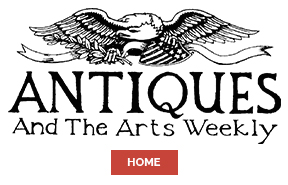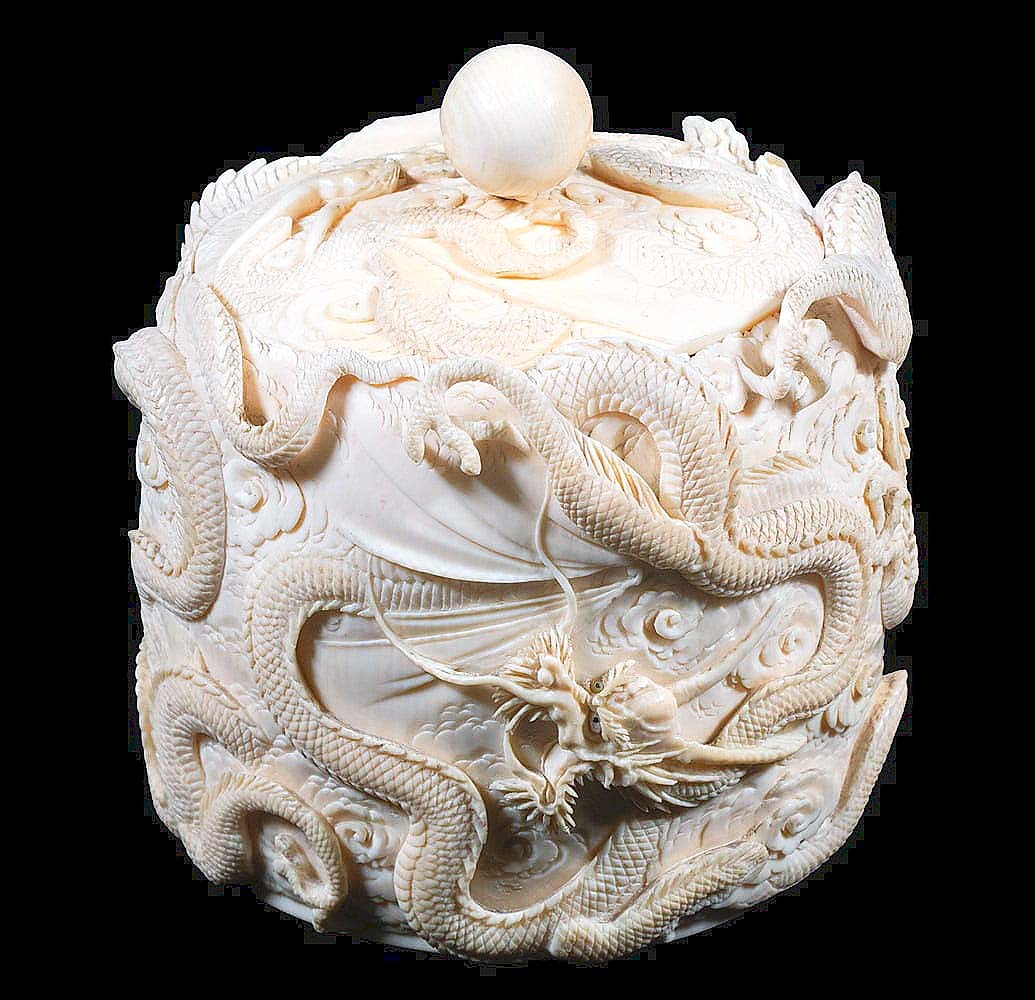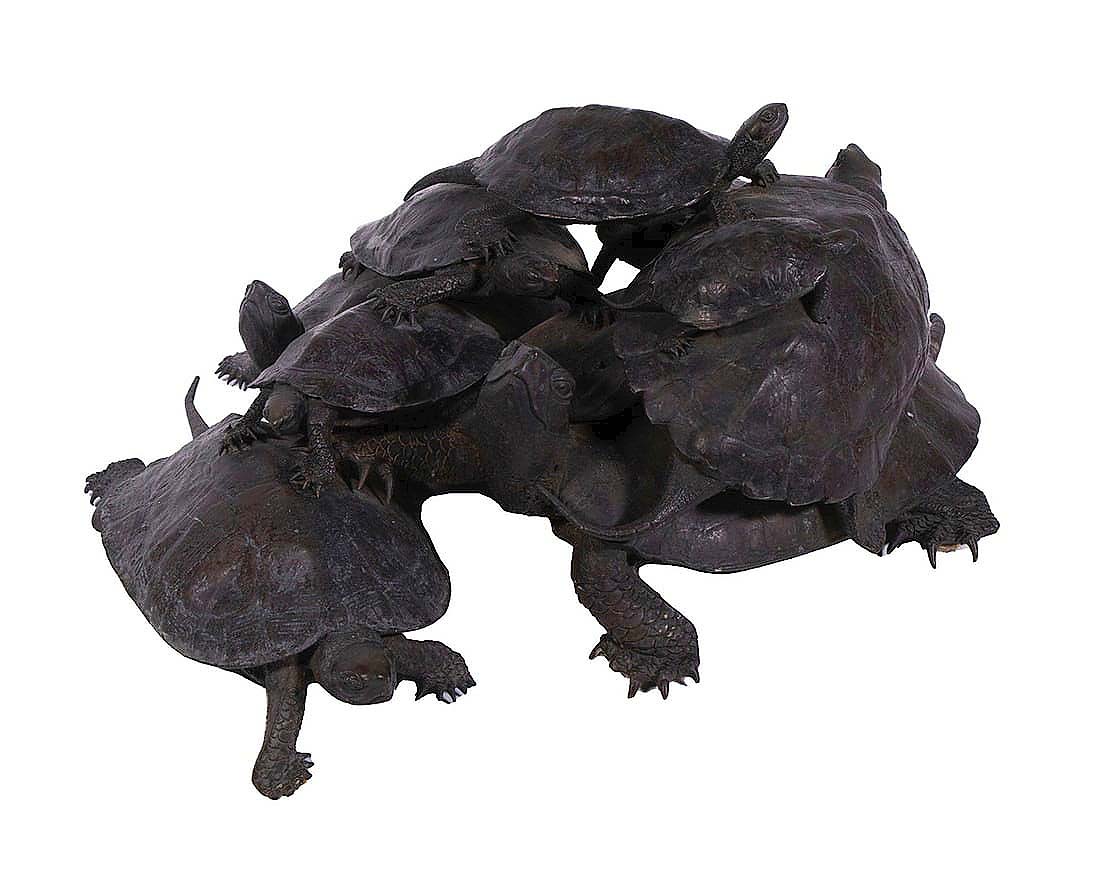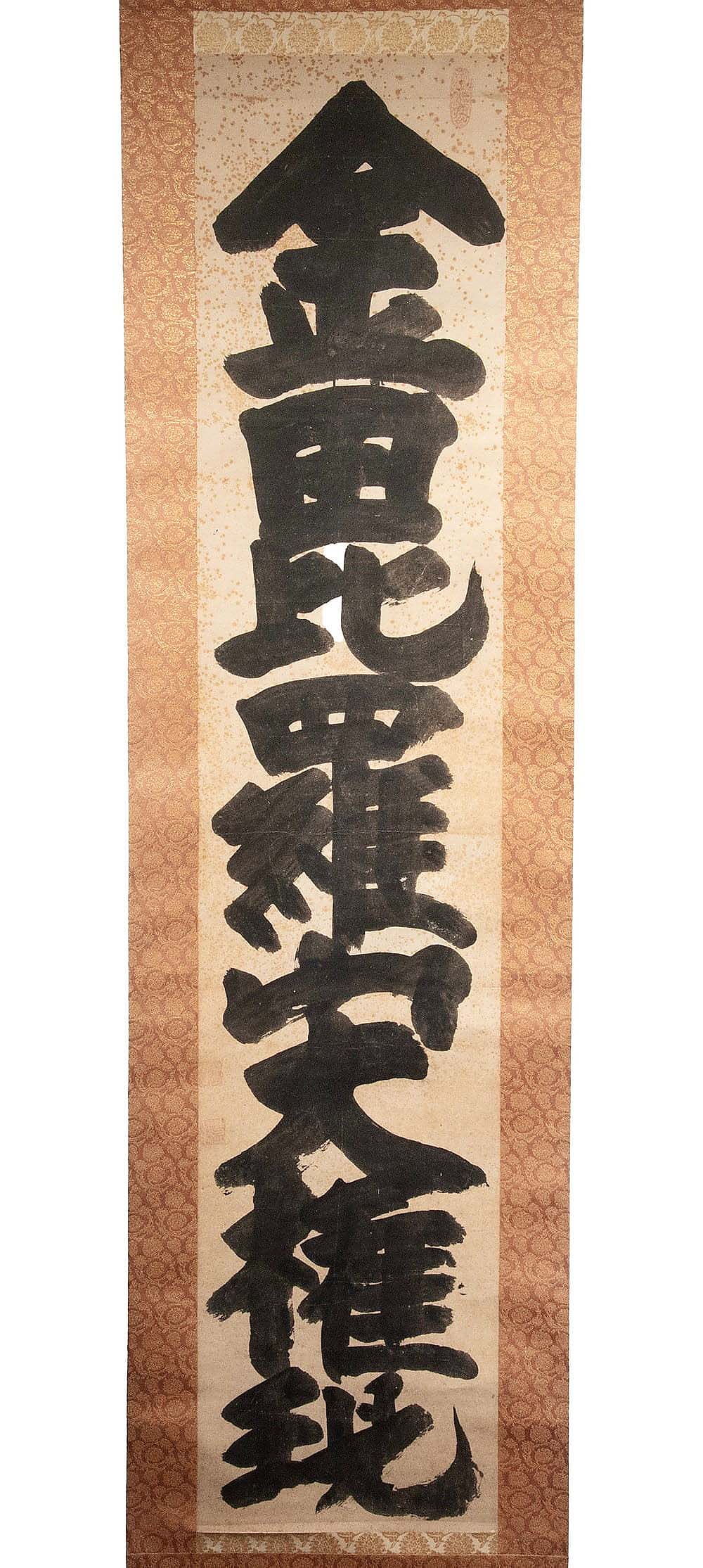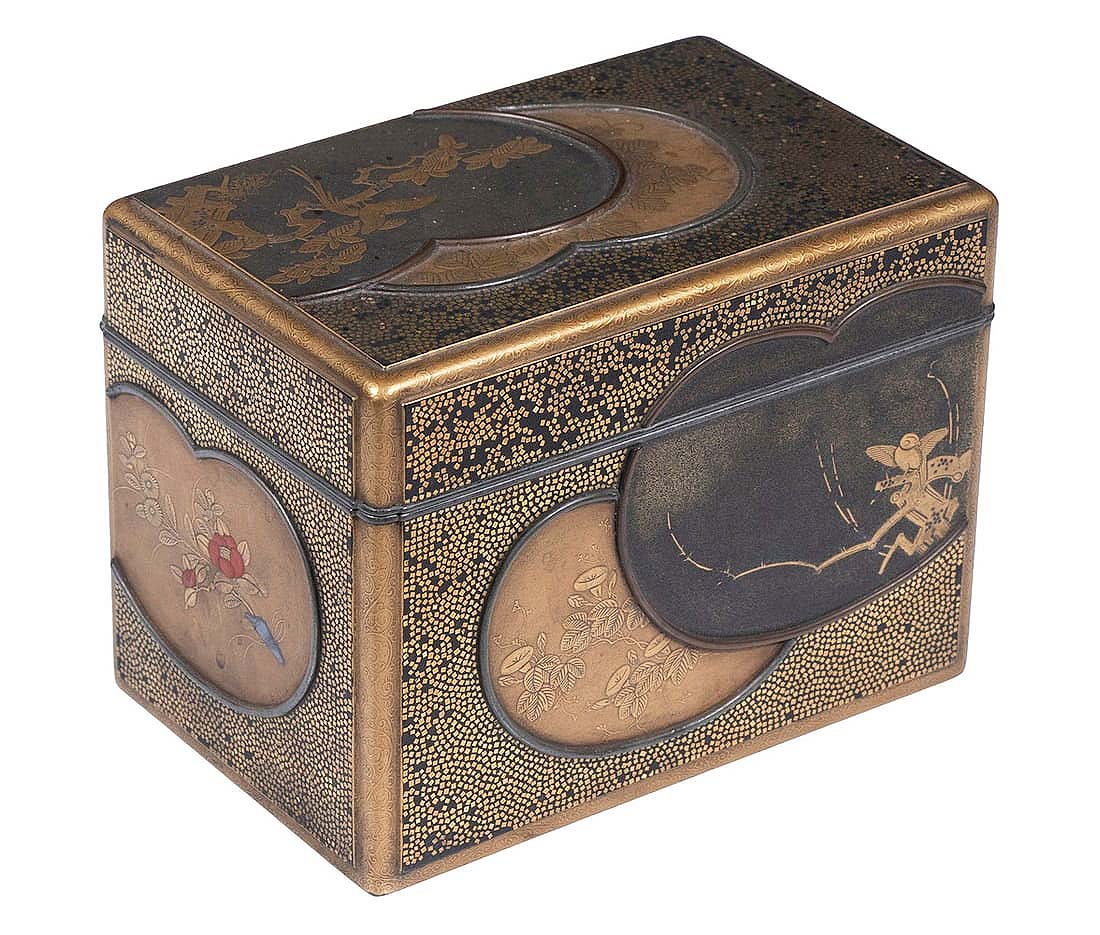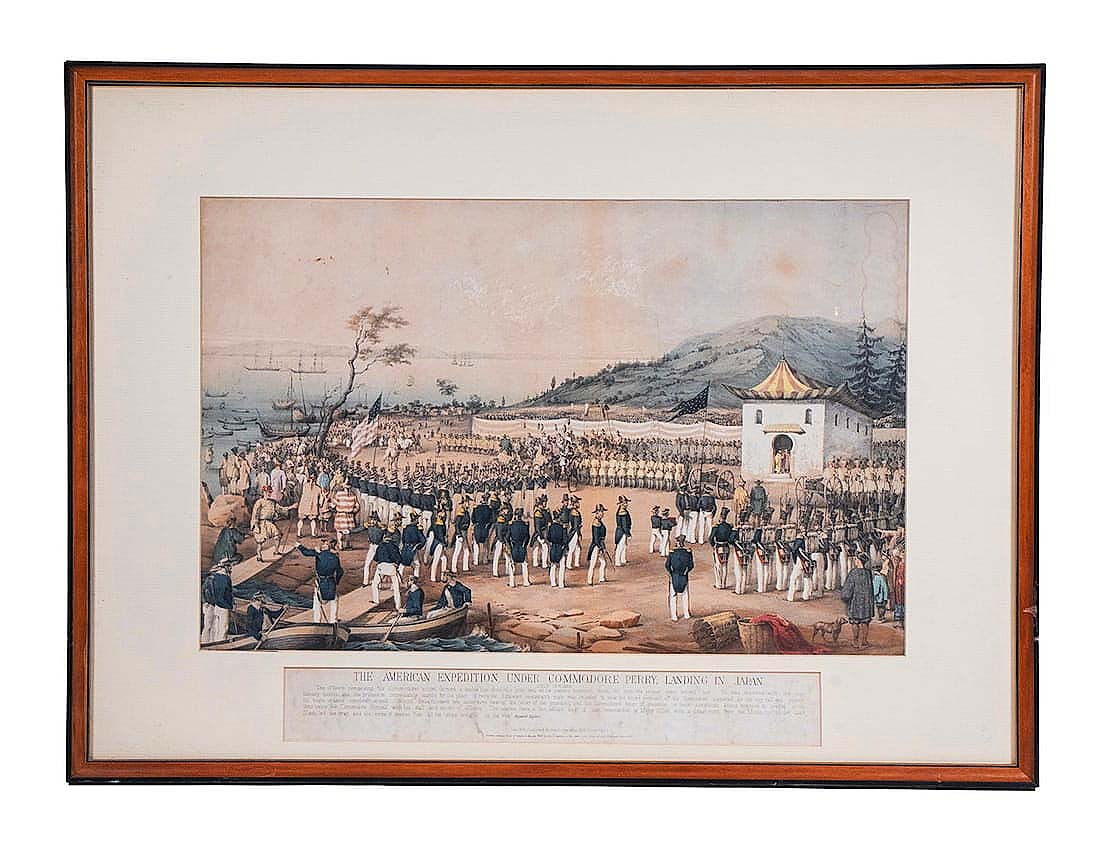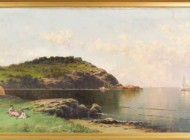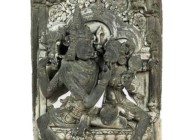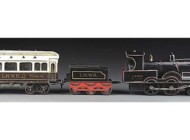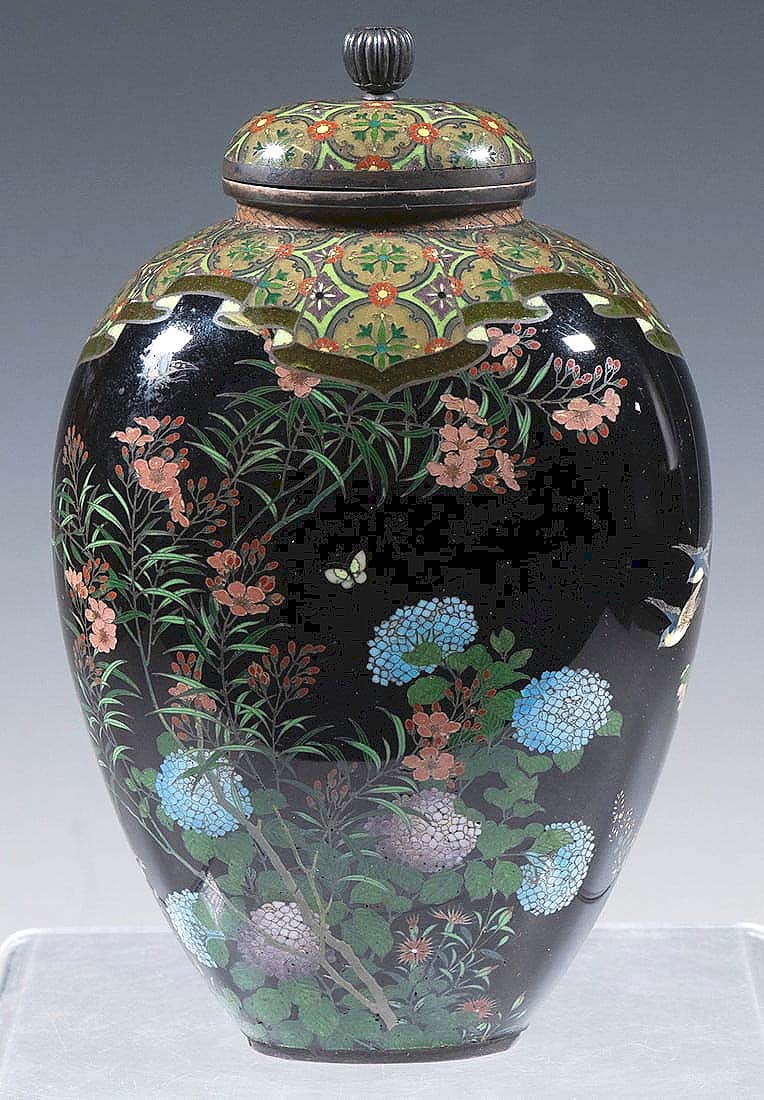
Top-lot status was given to this unsigned silver wire cloisonné enamel high shouldered jar, 6 inches high, from the Meiji period, which bloomed to $33,000 ($800-$1,200).
Review by Kiersten Busch
THOMASTON, MAINE — More than 500 lots of Japanese woodblock prints, rare netsuke, inro and okimono, painted scrolls, traditional silk work, watercolors and other Asian items crossed the block in Thomaston Place Auction Galleries’ Japanese Art & Antiques sale on May 2. With a sell-through rate of 86 percent, the sale made more than $200,000 by the time the final lot was hammered down.
“We were very happy with the auction and especially excited for bidders and consignors alike,” shared Kaylor Bergman, marketing associate. “The debut of our podcast, Auction Waves, helped to ramp up the excitement with guest experts from the Maine Maritime Museum in Bath, Maine, and Moonlit Sea Prints in Easthampton, Mass., to talk about trade relationships between Japan and Maine in the Nineteenth Century and the history of woodblock printmaking.”
Of the bidding pool, Bergman mentioned that “the majority of our bidders were online, but we saw some competitive bidding from the in-person audience, and the phone bidders came in strong this auction.” Bergman was also able to add that the buyers of the top dozen or so lots “were won by domestic bidders, and the other half were by overseas bidders. As I mentioned with our audience, the majority of our winning bidders from these popular pieces were won by online bidders and a few went to the phones.”
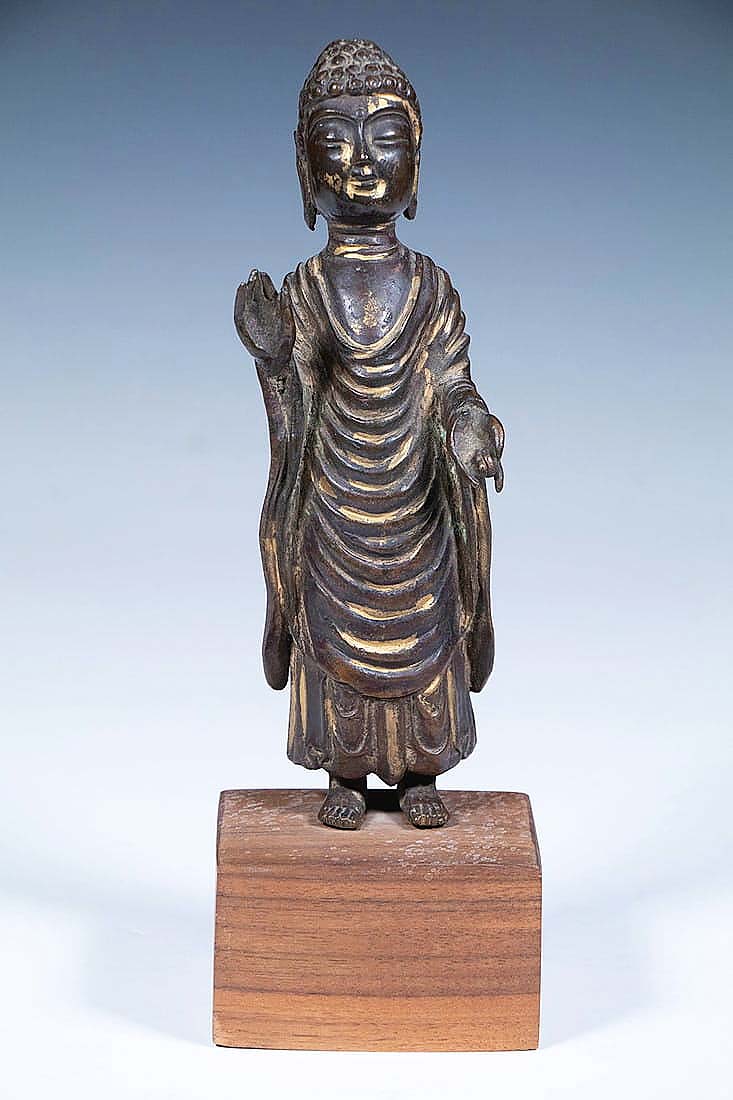
Standing at 7 inches high, this Seventeenth Century Momoyama standing bronze altar votive of the Bodhisattva Jizo had two open ports and a tab on its back for mounting; it earned $5,625 ($1/1,500).
The day was led by a Meiji Period silver wire cloisonné high shouldered jar, which far surpassed its $1,200 high estimate thanks to an international phone bidder who paid $33,000. The unsigned Nineteenth Century jar was made with silver mounts and was decorated with floral, bird and butterfly motifs on a black field. Additionally, its lid was accented by a chrysanthemum-form finial. “Our Conditions Department received over 15 requests, the most of any lot in the sale, on [this lot],” said Bergman, “so, we had a possible clue as to its popularity.” The other 11 cloisonné lots on offer ranged in price from $75 for a two-piece lot from the late Nineteenth Century which included a covered jar and a miniature urn, to $2,000 for a Meiji period miniature lobed gunbari silver-mounted cloisonné vase by Kumeno Teitaro (1861-1939).
Bronze sculptures were well represented, with 47 lots crossing the block. This group was led by a bronze sculpture of a cluster of nine turtles in assorted sizes, which was noted as “rare” in the auction catalog. Containing the artist’s seal mark on its base, the statue walked its way to a $6,000 finish against a $1/2,000 estimate. A few other bronze animals went home with new owners, including a monkey okimono (decorative ornament) ($2,875), an articulated crab ($1,750) and a bronze panel of a tiger ($1,125), among others.
For objects with more practical uses, bidders turned their attentions to the eight lots of tetsubin, or Japanese cast iron kettles, on offer which ranged in price from $75 for a Meiji period tetsubin, or cast iron kettle, with an arched handle, floral form lid finial and a raised and dotted surface, to $2,640 for a Nambu gourd patterned tetsubin with a mottled bronze lid and medium gooseneck spout. The latter also included a hollow bronze arch pivot bale handle positioned upwards.
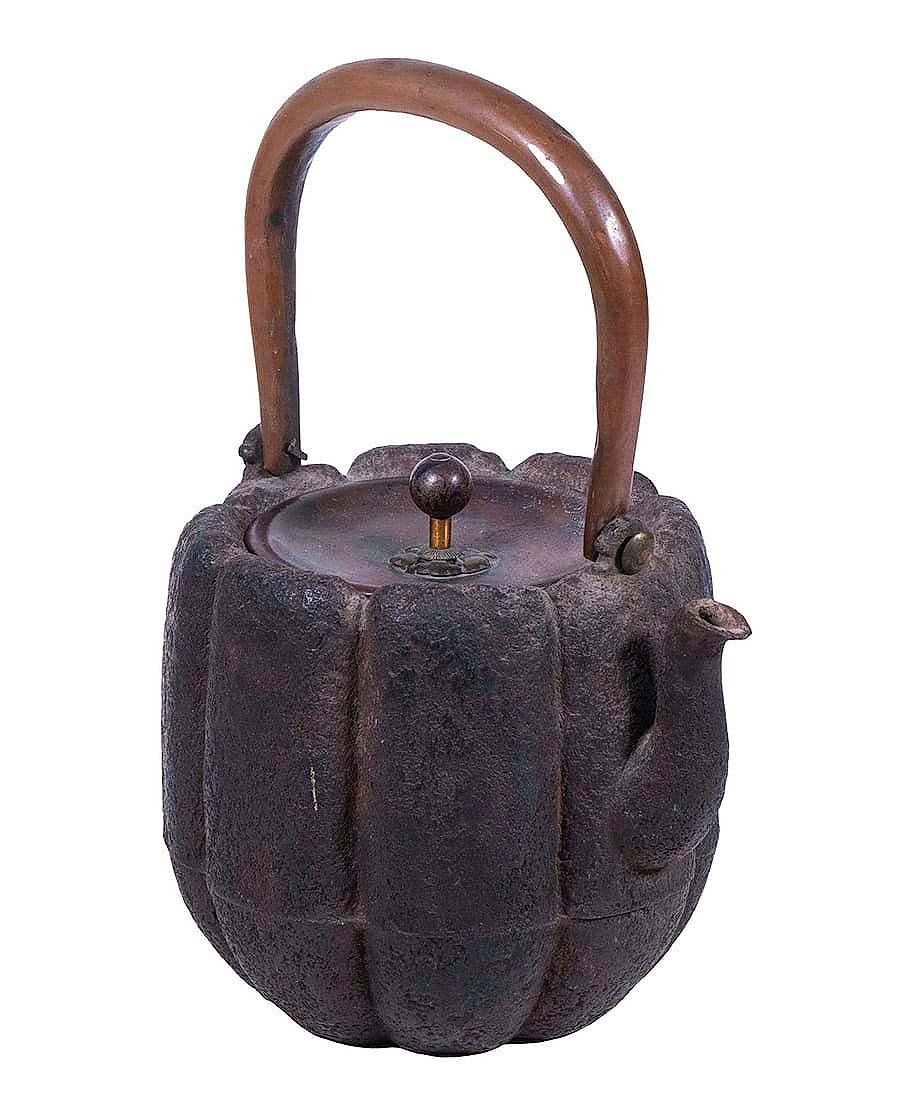
This Nineteenth Century Nambu gourd pattern cast iron kettle, or tetsubin, had a mottled bronze lid and stood tall at 9½ inches high; it poured out at $2,640 ($300/400).
Items made with lacquer were also quite popular with bidders, and the selection of 55 lots were led by a maki-e (“sprinkled-picture”) rectangular lacquered box with a lift-off lid that had provenance to the Fogg Art Museum at Harvard University. The box, which had lobed oval reserves depicting Kacho-e birds and blossoms against a gold square fleck ground, closed its lid for almost two times the high end of its $600/800 estimate at $1,560. The other 54 lots of lacquer items ranged in price from $63 for a Meiji period four-fold black lacquer and reed screen, to $1,375 for a Meiji period box in the form of a spreadwing crane.
Scrolls of all shapes and sizes crossed the block, with prices that were accessible to both budding and longtime experienced collectors. The highest earning lot of the 47-lot category was a 54-inch-long sumi-e ink on flecked silk brocade scroll of Zen calligraphy after Hakuin Ekaku, which drew up at $1,800. Other notable scrolls which achieved prices over $1,000 were a set of 12 monthly floral scrolls by Ganyo (Japanese, 1798-1852) ($1,500), a snowy landscape in Edo by Kano Eishin Bokushinsai Yasunobu (1613-1685) ($1,375) and a watercolor on silk ukiyo-e painting by an unknown artist of a family of four on a veranda ($1,250).
Thomaston Place’s next auction, Summer Splendor, is a three-day event on June 27-29, which will feature, among others, offerings from the estate of notable music industry figure Herb Belkin, as well as the collection of talk show host, Sally Jessy Raphael. For information, 207-354-8141 or www.thomastonauction.com.
